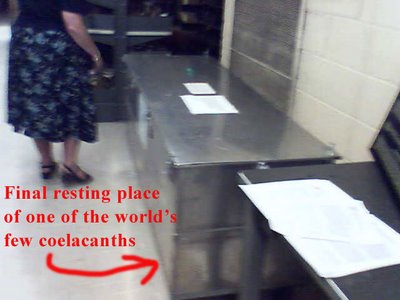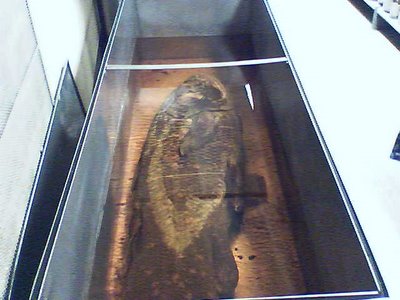Latest
- Last Sail Until Near Halloween
- A wild band of gypsies has set up camp a few doors...
- Having a slight gut, being toothless, bald and bea...
- Bad Brains Live @ CBGB 1982: (sigh) rock 'n' roll ...
- Let's have a coup party! -- I leave for Thailand i...
- My new pets are edible hermaphrodites.
- For my final day in the salt mines, I want to talk...
- Few things make a dreary day improve like giving a...
- With a dollar and the amount of time I spend think...
- Voting in the DC Statehood/Green Party primary is ...
Best of
Archives
- July 2004
- November 2004
- December 2004
- January 2005
- February 2005
- March 2005
- April 2005
- May 2005
- June 2005
- July 2005
- August 2005
- September 2005
- October 2005
- November 2005
- December 2005
- January 2006
- February 2006
- March 2006
- April 2006
- May 2006
- June 2006
- July 2006
- August 2006
- September 2006
- October 2006
- November 2006
- December 2006
- January 2007
- February 2007
- March 2007
- April 2007
- May 2007
- June 2007
- July 2007
- August 2007
- September 2007
- October 2007
- November 2007
- December 2007
- January 2008
- February 2008
- March 2008
- April 2008
- May 2008
- June 2008
- July 2008
- August 2008
- September 2008
- October 2008
- November 2008
- December 2008
- January 2009
- February 2009
- March 2009
- April 2009
- May 2009
- June 2009
- July 2009
- August 2009
- September 2009
- October 2009
- November 2009
- December 2009
- January 2010
- February 2010
- March 2010
- April 2010
- June 2010
- July 2010
- September 2010
- October 2010
- November 2010
- December 2010
- January 2011
- February 2011
- March 2011
- June 2011
- July 2011
- August 2011
- September 2011
- November 2011
- July 2012
- October 2012
Blanketing opinions that I'll probably regret soon.
Monday, October 02, 2006
Today I stumbled upon a dead coelacanth lying in a metal coffin.
 When I got out of bed today, I had no idea that I'd later be unscrewing the vices holding down the metal coffin lid of a rare scientific phenomenon. And it wouldn't have been possible without a friendly government librarian.
When I got out of bed today, I had no idea that I'd later be unscrewing the vices holding down the metal coffin lid of a rare scientific phenomenon. And it wouldn't have been possible without a friendly government librarian.Scientific libraries are seldom visited and there's always a time-locked stasis hanging thick amongst the crusty journals and forgotten stacks. The library at the Natural History Museum fits that profile. Most people aren't aware that there's a massive taxpayer-funded library and research center in the warehouse-sized basement at 10th and Constitution Avenue in their nation's capital, but as I found today while doing research, it's full of hidden wonders.
Having about two library patrons per day, the Natural History Museum's staff are able to devote quality time to their visitors. While leading me to the far-off location of the ancient collection of the journal Aquaculture, I followed my guide down a poorly-lit government hallway past unmarked doors when she paused by a thick metal entrance.
 "In there is one of the largest collections of fish in the world", she said, as I stood on my toes to peer through the tiny window.
"In there is one of the largest collections of fish in the world", she said, as I stood on my toes to peer through the tiny window. I had to see it.
After helping her line up the key hole with the light from my opened cell phone, she told me that just inside---in addition to thousands of fish species in jars of formadehyde---I could see a coelacanth if I wanted.
Wait, the same coelacanth that was thought extinct for 65 million years until it was discovered in 1938 and only caught a few times since? Yes, that coelacanth.
Next I knew, I was untwisting the clamps that held the lid on the metal coffin of the Smithsonian's only specimen, which, according to their website, is "not accessible to the general public". What a privilege!
 The overwhelming sharp smell of stale formaldehyde and alcohol rose up at my face as we clumsily laid the heavy lid to the side.
The overwhelming sharp smell of stale formaldehyde and alcohol rose up at my face as we clumsily laid the heavy lid to the side. Below inches of disgusting brown chemicals lay the five-and-a-half foot beast---at peace in its liquid grave since 1968 when the museum obtained it.
Despite the poor quality of my cell phone camera, you can see the handsome prehistoric monster in all his dinosaurian splendor. And thanks to a bored librarian, I had the most ineresting Monday I've had in months.
Comments:
<< Home
Check out this link:
http://observer.guardian.co.uk/world/story/0,16937,1681745,00.html
We will fish them back into extinction!
http://observer.guardian.co.uk/world/story/0,16937,1681745,00.html
We will fish them back into extinction!
Hey Chris,
You and me should start an aquaculture business farming coelacanths. We could make MIILLIIONNNSS!!
You and me should start an aquaculture business farming coelacanths. We could make MIILLIIONNNSS!!
just saw a whole thing on TV about them 2 nights ago. I never even knew they existed until then. What a coinkidink!
Unbelievably cool. You should see if they'll let you hook it up to that Scientologist machine you screwed around with a few weeks ago. Who knows what valuable data is just waiting to be discovered?
I dont know if that's a good idea factro, for all we know that machine might give some crazy reading and then the Scientologists would declare the fish their Messiah.
Them's good eating. I think I caught one in Rock Creek Park the other day.
It was either that or human remains.
It was either that or human remains.
You know, you are quite likely the only person on the planet with a picture of a coelocanth on his cell phone. You interesting bastard.
Wow, thanks for all the compliments, people. I'm just glad my "readers" actually can share my enthusiasum and even know what a coelacanth is.
Chris,
What do you think they taste like? Have you ever eaten a deep sea fish? I hear they're pretty rich.
Chris,
What do you think they taste like? Have you ever eaten a deep sea fish? I hear they're pretty rich.
I bet if you flatter the librarian with compliments about her hair, you could use her as an "inside man" and steal it.
Then you could mount it over your bed. What else did you see down there?
Then you could mount it over your bed. What else did you see down there?
I worked in the Natural History building as a student, in the Paleontology department. I used to sneak around all of those hidden hallways during my breaks, and it's amazing what you find back there. The one place that was off limits, before the museum opened was the hall that houses the Hope Diamond. I could live with that.
Nice catch! I was in London a month or two ago and got to see his brother at the Natural History Museum. Funny thing about those brits, they keep theirs out in the open where everyone can see them. Check it out at:http://weliveonaboat.com/uploaded_images/Coelacanth 2.jpg
Post a Comment
<< Home
Web Counters

